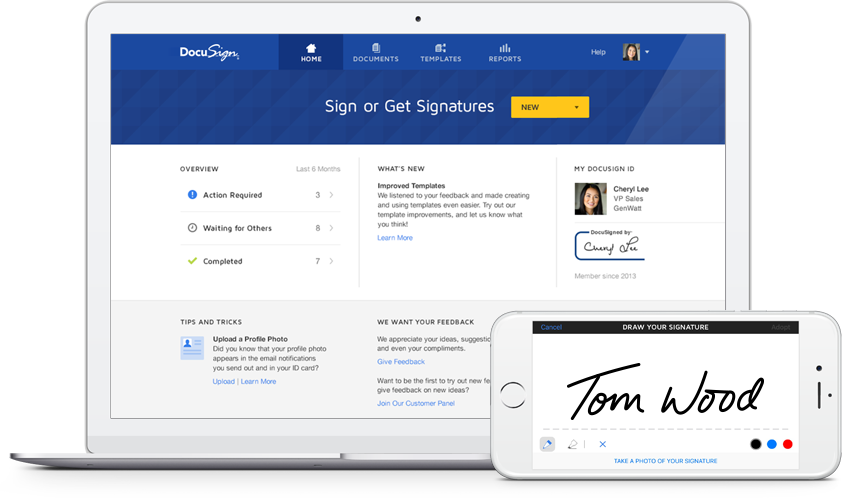DocuSign announced this October 13 the integration of its transaction management service and electronic signature into the Ethereum blockchain. The company, founded in 2003, offers services for the management of contracts and documents with electronic signatures.
Through its official Twitter account, the company based in California, United States, said: “For customers that opt-in, DocuSign will compute a one-way cryptographic hash fingerprint for every completed transaction, and write the value to the Ethereum blockchain — the most popular blockchain for smart contracts in our view.”
The company has reportedly been working on smart contracts ever since it partnered with Visa. Together with Visa, the company created a prototype for car-based commerce. Also, the startup is part of the Ethereum Alliance.
In 2011, the company had processed 500 million pages. A year later, it had made 150 million electronic signatures in 188 countries, with 25 million users. That year, at least 90% of the companies that made up the Fortune 500 list used DocuSign services, according to a report. In 2016, the company reached fourth place in the Forbes Cloud 100 ranking.
Ethereum is the world’s most used blockchain network. Also, many projects that include distributed accounting technology are smart contracts. Such is the case of the prediction market such as Augur, SpankChain, Kickcoin, among others.
What about vulnerabilities
However, errors detected in smart contracts have been exploited by hackers to subtract large amounts of cryptocurrencies that represent millions of dollars. In fact, both SpankChain and Kickcoin have been objects of this type of attack.
About smart contracts
An intelligent or smart contract is a computer program that is designed to accomplish a task or a series of tasks. It represents an agreement that has the ability to be executed automatically after both parties have agreed to the terms. Blockchain and smart contracts are changing businesses the way the internet did in the 1990s.
